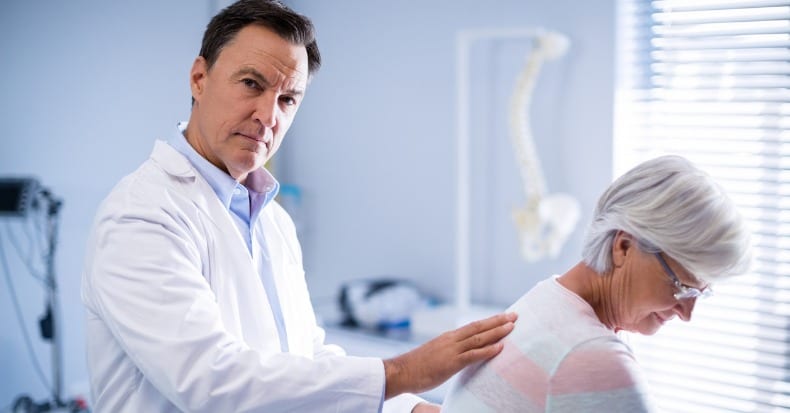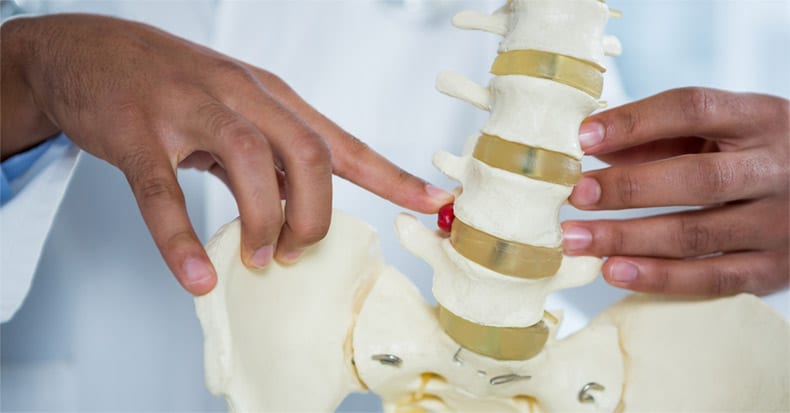Newest Articles
The hip and knee are anatomically very close to one another. Functionally, there are several muscles that attach above the hip and below the knee joint. Hence, depending on the position and/or activity, the same muscle can move the hip and/or the knee. This close relationship crosses over in dysfunction as well, as patients with [..]
Whiplash-associated disorders (WAD) is defined as “an acceleration-deceleration mechanism of energy transfer to the neck.” WAD may result from rear-end or side-impact motor vehicle collisions (MVCs), diving and other sports-related injuries, as well as from falls, assaults, and more. Because many bones and soft tissues may be involved in WAD, there are a variety of [..]
As discussed previously, probiotics can benefit patients with gut complications such as enteritis, constipation, and irritable bowel syndrome (IBS). Probiotics may also help decrease allergic inflammation, treat nonalcoholic fatty liver disease (NAFLD), and fight immune deficiency diseases. Ingesting probiotics can improve calcium absorption and bone calcium accretion to treat osteoporosis in postmenopausal women. They may [..]
Data from the Chiropractic Profession Continue to Become Better Defined and UnderstoodBackgroundPain is a huge problem in America, and all Americans know that opiate drugs are not the solution to our pain problem.In her 2014 book, A Nation in Pain, Judy Foreman claims, “Out of 238 million American adults, 100 million live in chronic pain.” (1) [..]
Dysmenorrhea, also known as painful periods, is a common gynecological condition that affects up to 70% of menstruating women. About 15% of individuals with the condition report that it significantly interferes with their activities of daily living (ADLs) and in some cases, results in absence from school and/or work. Studies have found that dysmenorrhea is [..]
According to the Vestibular Disorders Association, there is a classification of dizziness called “cervicogenic dizziness”, or dizziness resulting from neck pain. Published reports have linked the influence of head position on equilibrium as far back as the mid-1800s, but it wasn’t until 1955 when researchers coined the term “cervical vertigo” to describe a clinical condition [..]
Let’s say you’ve applied for a job that requires frequent gripping and handling of products and you heard that carpal tunnel syndrome (CTS) is a problem at this particular manufacturing plant. You really need the job, but you are leery of the possibilities of developing CTS. Is there anything you can do to PREVENT it? [..]
The shoulder is not just one joint but rather four: the sternoclavicular (collar bone/breast bone), acromioclavicular (the “roof” of the ball & socket joint), glenohumeral (the ball & socket joint), and scapulothoracic joints (shoulder blade/rib cage joint). There are also many structures in the vicinity that can mimic shoulder pain—namely, the cervical spine (neck), the [..]
Mild traumatic brain injury (mTBI) is one of the many conditions that can accompany a whiplash injury. The term is often used interchangeably with concussion, while “post-concussion syndrome” and TBI (without the word “mild”) refer to long-term residual symptoms. Symptoms associated with mTBI initially include dizziness, nausea, and headaches followed by slow cognition—difficulty processing thought, [..]
We all know that bacteria can cause disease, so it makes sense to be at least a little leery about taking a supplement that is loaded with bacteria. There is however, a growing volume of scientific support that probiotics (PBs) can both treat as well as prevent quite a few illnesses.
Probiotics literally means “for [..]
A Modern Epidemic of Poor Posture, Neck Pain, Shoulder Pain, Arm/Hand Neurological Symptoms and Accelerated Spinal Degenerative Arthritis[“Text Neck” and “Tech Neck” are synonymous]On Monday, March 3, 2018, the front page of the newspaper USA Today printed a “snapshot” noting that “US consumers spend an average of 7.8 hours each day engaging with digital content.”Representative Background Story [..]
Low back pain (LBP) is VERY common condition, and research shows that up to 50% of the adult population in the United States will experience LBP in any three-month timeframe over the course of a year. Worse, low back pain can persist for months, years, and even longer, significantly reducing one’s ability to work, play, [..]















